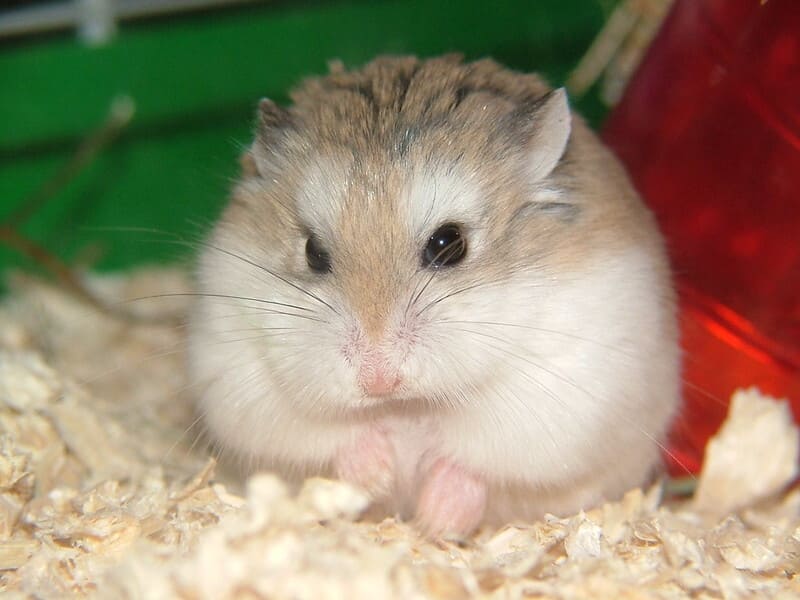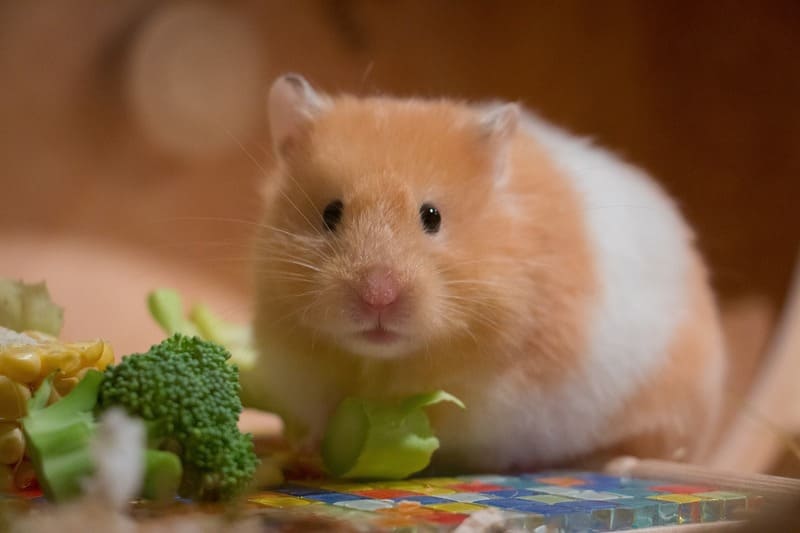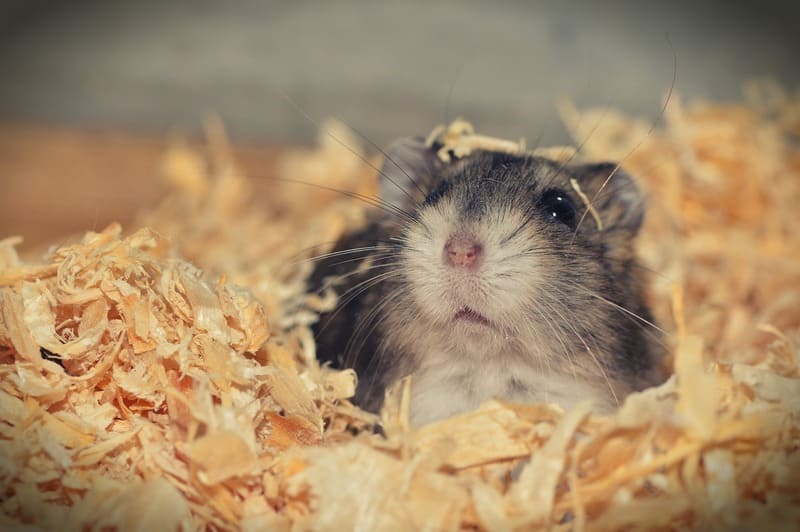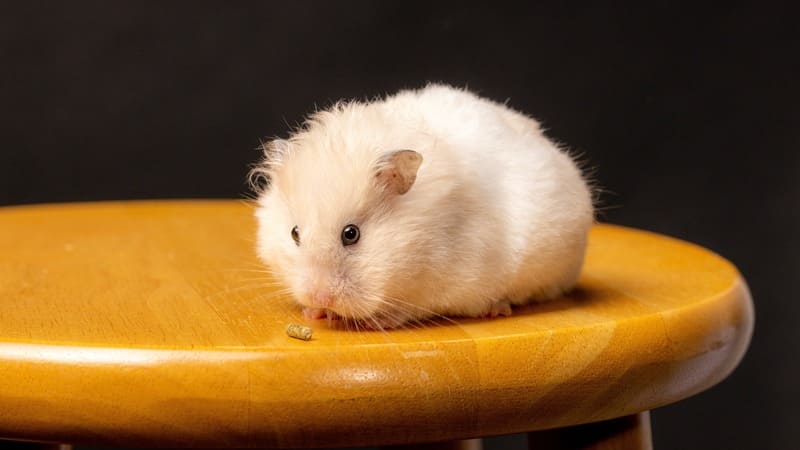Hamsters are small, adorable, and often kept as pets by people all around the world. They are known for their round bodies, fuzzy coats, and tiny paws, making them endearing companions for many. But have you ever wondered where these delightful little creatures come from? What is the history of hamsters, and how did they become such popular pets? In this exploration of the origins and evolution of hamsters, we’ll dive into their natural habitat, historical context, and their journey from the wild to our homes.

The Natural Habitat of Hamsters
To understand the origins of hamsters, it’s essential to start with their natural habitat. Hamsters are rodents, and most species of hamsters originate from regions in Europe and Asia. Some of the most well-known hamster species include the Syrian hamster, the Roborovski hamster, the Russian dwarf hamster, and the Chinese hamster. Each of these species has its unique characteristics, but they share a common evolutionary history.
Europe and Asia: The Birthplace of Hamsters
Hamsters are believed to have originated in Europe and Asia. The European hamster (Cricetus cricetus), also known as the common hamster, is one of the earliest known hamster species. This species is native to Eastern Europe and Western Asia. It’s the largest of all hamster species, and its burrowing and hibernating behaviors are typical among hamsters.
In contrast, the Syrian hamster (Mesocricetus auratus) is native to Syria and parts of northern Israel. This species is considered the ancestor of many pet hamsters kept today. The Syrian hamster was first discovered in the 18th century and later introduced to the pet trade.
Habitat and Lifestyle
Hamsters are adapted to live in a variety of habitats, including deserts, grasslands, and agricultural areas. They are well-suited to a burrowing lifestyle, with specialized cheek pouches for carrying food and extensive burrows for shelter. Hamsters are known for their solitary nature, which is an adaptation to their often sparse habitats.
These burrows serve not only as shelter but also as food storage. Hamsters are known for hoarding food in their burrows, which is an important survival strategy in regions where food can be scarce during certain times of the year. Their solitary and territorial behaviors help protect their food stores from other hamsters.
The Discovery of Hamsters
Hamsters as we know them today might not have become popular pets if it weren’t for a few key discoveries in the 18th and 19th centuries.
First Encounters in the Wild
The first documented encounter with hamsters in the wild dates back to 1797 when a German zoologist named George Waterhouse reported their existence in Syria. The hamsters he observed were the ancestors of the Syrian hamster, which later became a popular pet and research subject.
Introduction to the Pet Trade
The Syrian hamster’s introduction to the pet trade is attributed to another significant discovery. In the 1930s, a British scientist named George H. Hamster caught a few of these rodents while on an expedition in Syria. He brought them back to the UK and started breeding them in captivity. As a result, the hamster species was named after him.
The first litter of hamster pups born in captivity became an attraction in the London Zoo, and this event marked the beginning of the Syrian hamster’s popularity as a pet. From there, they were distributed to various parts of the world, and breeding programs were established.

Evolution of Hamster Species
Hamsters have evolved over millions of years, adapting to various environments and challenges. Understanding their evolutionary history helps shed light on their diversity and unique characteristics.
Divergent Species
The hamster family, Cricetidae, includes a wide variety of species, each adapted to its specific environment. Hamsters have diversified into different niches, resulting in numerous species with distinct characteristics.
One example is the Chinese hamster (Cricetulus griseus). This small, agile species is known for its remarkable ability to climb. It’s native to Northern China and Mongolia and differs significantly from the Syrian hamster in terms of appearance and behavior.
Another notable species is the Roborovski hamster (Phodopus roborovskii), known for its dwarf size and speed. These tiny hamsters are the smallest of all hamster species and are native to the deserts of Mongolia and China.
Adaptations for Survival
One of the key features that hamsters share is their ability to burrow. This adaptation allows them to create complex underground tunnels and chambers for protection from predators and extreme weather conditions. They are also equipped with cheek pouches, which they use for storing and carrying food.
The hamster’s cheek pouches are a remarkable adaptation for their nomadic lifestyle. They can gather food from a wide area and transport it back to their burrows for safekeeping. These pouches can stretch to many times the size of the hamster’s head, allowing them to carry relatively large amounts of food.
Life Cycle and Reproduction
Hamsters have relatively short life spans, typically ranging from one to three years in the wild, though they can live longer in captivity. They have a fast reproduction rate, with litters of pups being born after a gestation period of around 16 days.
One unique aspect of hamster reproduction is that the mother is solely responsible for caring for the young. Males and females have no role in parenting, and, in fact, they can be aggressive toward each other if housed together. The mother hamster nurses her pups, keeps them warm, and provides them with food until they are old enough to venture out of the burrow on their own.
Diversity in Behavior
Hamsters also exhibit diverse behaviors within different species. For example, the European hamster is known for its hibernation behavior, which is not commonly seen in other hamster species. European hamsters dig deep burrows and hibernate for several months during the winter, relying on their stored food reserves.
In contrast, the Syrian hamster does not hibernate and is active year-round. It’s also more solitary compared to some other species that can tolerate living in small groups.
Hamsters as Pets
The popularity of hamsters as pets can be traced back to the Syrian hamster’s introduction to the pet trade. However, their journey from the wild to our homes and the different species that have contributed to the pet trade is a fascinating tale.
The Syrian Hamster as the First Pet Hamster
The Syrian hamster, with its gentle disposition and attractive appearance, quickly won the hearts of pet enthusiasts. Its introduction to the pet trade in the early 20th century marked the beginning of hamsters as household pets.
Syrian hamsters come in a range of colors and patterns, making them appealing to people of all ages. Their relatively small size and manageable care requirements further contributed to their popularity.
Breeding and Color Variations
As hamsters became more popular as pets, selective breeding efforts led to the development of various color variations and coat patterns. Among the most common are the golden hamster, which has a golden-brown coat, and the long-haired or teddy bear hamster, known for its fluffy appearance.
The availability of different colors and patterns makes hamsters even more appealing to pet owners who enjoy having a variety of options.
Ethical Concerns in Breeding
It’s worth noting that the extensive breeding and the pursuit of unique coat colors have raised some ethical concerns. Breeding practices that prioritize aesthetics over the health and well-being of the animals have led to various genetic health issues in pet hamsters. This includes conditions like obesity, diabetes, and dental problems. Ethical breeding efforts aim to address these issues and promote the health and welfare of hamsters.
Care and Maintenance
Hamsters make excellent pets for those who are willing to provide them with the care and attention they need. Their enclosures should mimic their natural habitat, offering them space to burrow and explore. Proper bedding, food, and access to fresh water are essential for their well-being.
Handling hamsters gently and regularly can help them become more accustomed to human interaction. However, it’s important to note that hamsters are often more active during the night, which means they may not be the ideal pet for those who prefer daytime companionship.
Challenges in Pet Ownership
Owning a pet hamster comes with its set of challenges. It’s crucial to be aware of these challenges before deciding to bring a hamster into your home. Some common issues faced by hamster owners include:
- Solitary Nature: As mentioned earlier, most hamster species are solitary, and they may become stressed or aggressive if housed with other hamsters.
- Short Lifespan: Hamsters have relatively short lifespans, which can be emotionally challenging for their owners.
- Nocturnal Activity: Hamsters are typically most active during the night, which can be inconvenient for some owners.
- Health Concerns: Hamsters are susceptible to various health issues, and their small size can make veterinary care challenging.
- Escape Artists: Hamsters are known for their ability to escape from cages or enclosures if not properly secured.

Hamsters in Scientific Research
Apart from being popular pets, hamsters have also played a significant role in scientific research. Their use in laboratories has provided invaluable insights into various areas of biology and medicine.
The Hamster Wheel of Medical Research
Hamsters have been instrumental in studies related to reproduction, genetics, and circadian rhythms. These small rodents have contributed to our understanding of the mammalian reproductive system and the effects of various substances on fertility. For example, hamsters have been used in research on hormonal contraceptives and their impact on fertility.
In addition to reproductive research, hamsters have been crucial in studying the effects of circadian rhythms on human health. Their nocturnal behavior makes them suitable subjects for studying the body’s internal clock and how it affects sleep, alertness, and overall well-being.
Hamsters and Disease Research
Hamsters have also been used as models for studying infectious diseases. They are susceptible to certain viruses and bacteria, making them ideal for investigating diseases that affect humans. For example, the Syrian hamster has been employed in research on the transmission and treatment of diseases like herpes simplex and respiratory syncytial virus (RSV).
Their relatively large size compared to other rodents makes them easier to work with in laboratory settings. This size is advantageous for conducting experiments, especially those involving the administration of drugs or the monitoring of physiological changes.
Hamsters in Popular Culture
Hamsters have made their way into popular culture in various ways, from books and cartoons to commercials and memes. These small rodents have become iconic symbols and characters in many forms of media.
Hamsters in Literature and Cartoons
One of the most famous fictional hamsters is “Hamtaro,” a character from a Japanese children’s book series that was later adapted into an anime and video games. Hamtaro is known for his adventures with his hamster friends, and the series became widely popular, especially among children.
In literature, hamsters have occasionally been featured in children’s books, adding to their charm and appeal. Their cute and relatable nature makes them excellent subjects for children’s stories and illustrations.
Hamsters in Advertising
Hamsters have also been used in advertising to promote various products. One notable example is the Kia Soul commercial featuring a group of hip-hop hamsters driving through a city, promoting the car’s stylish and unique design.
The use of hamsters in advertising capitalizes on their appeal and likability, making them an effective marketing tool.
Memes and Internet Culture
In the age of the internet, hamsters have made their way into the realm of memes and online culture. Perhaps one of the most famous internet hamsters is “Pizzarat,” which gained fame for its pizza-carrying antics in the New York City subway. These viral moments showcase the unexpected and adorable behavior of hamsters in everyday settings.

The Future of Hamsters
As with many species, hamsters face challenges in the modern world, including habitat loss and the impact of human activities. It’s crucial to consider the welfare of hamsters in the wild and in captivity as we move forward.
Conservation Efforts
The European hamster, in particular, has faced a decline in population due to habitat destruction and agricultural practices. Efforts are being made to conserve this species and its natural habitat. Conservation organizations are working to protect the European hamster’s burrows and establish reserves where they can thrive.
In addition to wild hamsters, the welfare of pet hamsters is also a matter of concern. Ethical breeding practices and responsible pet ownership are essential for ensuring the well-being of these beloved pets.
Education and Awareness
Raising awareness about hamsters and their natural history is essential for their conservation and welfare. Encouraging responsible pet ownership, proper care, and ethical breeding practices can contribute to the health and happiness of these small creatures.
Educational programs and initiatives can help people better understand hamsters, their needs, and their role in the ecosystem. This knowledge can foster a greater appreciation for these delightful rodents.
Conclusion
Hamsters, with their origins in Europe and Asia, have evolved into a diverse group of species, each adapted to its unique environment. Their introduction to the pet trade, particularly the Syrian hamster, marked the beginning of their popularity as household pets. They have contributed to scientific research, playing essential roles in understanding reproduction, genetics, and circadian rhythms.
Hamsters have also found their way into popular culture, appearing in literature, cartoons, advertising, and even as internet memes. Their appeal continues to captivate people of all ages.
As we look to the future, it’s essential to consider the welfare of hamsters in both the wild and captivity. Conservation efforts, responsible pet ownership, and education are vital for ensuring that these endearing rodents thrive and are appreciated for generations to come. Hamsters, with their humble origins and delightful charm, are truly a testament to the fascinating interplay between nature and human culture.
